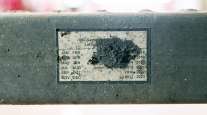Is More Frequent Overhead Maintenance Worth the Trouble?

[Stay on top of transportation news: Get TTNews in your inbox.]
Adjusting overhead valves on heavy-duty diesels is a routine maintenance item subject to benign neglect in many of today’s fleets. The hardware that links the camshaft to the valves and some injectors is durable. Engines normally seem to run well without readjusting overheads for hundreds of thousands of miles, and manufacturer recommendations vary widely. So most fleets adjust rarely or not at all. But, a few operators have learned that trucks equipped with diesel particulate filters prone to clogging respond well to frequent adjustments.
Joel Morrow, chief technical officer, research and development, and test driver at Ploger Transportation, explained that Ploger adjusts the overheads on all its tractors once a year. Plus, new trucks will receive a cylinder balance test. If the power balance is off by a significant amount, the new engine will see an overhead adjustment. This is Ploger’s practice even though both Volvo and Mack — the brands Ploger mostly runs — call for less frequent attention.

Baxter
The result, he said, is “reduced vibration, more pulling power, better fuel efficiency and reduced emissions.” Such frequent adjustment keeps regens low, and helps to reduce the rise in pressure across the DPF as the truck runs between cleanings, he said.
Gabe Roberts, director of product development at Jacobs Manufacturing, agreed.
“Not many people pick up on emissions versus setting the overheads. The DPF cleaning interval gets longer and regenerations are less frequent with proper overhead settings,” he explained, noting that resetting overheads keeps the timing of the valve events where it should be.

Q3 Calibrate Stories
►Investing in Seat Technology
►Shops Improve Efficiency, Productivity
►Volvo, Bendix Team Up on Safety, Training
►Menig: Technology Solutions for Trailers
►Freeze: Introducing Calibrate
Morrow said some large fleets that turn their new tractors over before their life has ended, after as many as 600,000 miles, never touch the overheads.
“Poor overhead adjustment messes up cylinder balance,” he insisted. “You can walk along by a running engine and hear the difference between cylinders.”
Morrow admits that factory engineers are split on the importance of frequently setting overheads.
“I do get pushback from them when I talk about how often we adjust,” but Morrow claims that this painstaking maintenance pays off eventually.
Ploger does a cylinder balance test before and after the adjustment. The technician notes whether each adjustment was tight or loose. Imbalance frequently drops from numbers like 13% or even more down to 3% or less.
Literature from Jacobs explains that the adjustment can tighten up if the valve seat recedes into the head because of the millions of times a valve hits the seat in the life of an engine. This can even result in valves hanging slightly open and loss of compression. Wear in the rocker, camshaft, valve tip or other parts can result in a wide setting and noise.
Factory recommendations vary
Cummins service information recommends an initial adjustment at 500,000 miles on its ISX and X15 engines.
Detroit, meanwhile, recommends an initial setting at 100,000 miles, one at 500,000, and then each 500,000 miles, according to Len Copeland, Detroit products marketing manager at Daimler Trucks North America.
Magnus Gustafson, vice president of aftermarket quality and operations at Volvo, recommends an initial adjustment at one year/150,000 miles, then every 300,000 miles.
Asked if there is any advantage to more frequent adjustments, he said, “Our testing has proven that the 150,000-mile adjustment is the prime time to make any adjustments after the engine is broken in.”

The first step in adjusting overheads is to remove the cam cover, after getting any piping or hoses crossing out of the way. (Mack Trucks Inc.)
Phil Cary, Southeast regional fleet service manager for Mack Trucks, had similar recommendations.
“Mack Trucks recommends adjusting overheads on the Mack MP7 and MP8 engines after the first 150,000 miles, then again every 300,000 miles,” he said. “For trucks that are not logging high mileage, we recommend the first adjustment at 12 months, followed by adjustments every 24 months for the life of the truck.”
Asked about the possible consequences of neglect in this area, Volvo’s Gustafson said degradation in fuel economy is usually the first thing noticed, and progressively, overhead noise becomes evident. Mack’s Cary believes it’s important to adhere to the recommended overhead adjustment schedule because regular maintenance helps maintain and improve fuel efficiency and performance.
“Valve adjustments are also a time to check the overall health of the engine and carefully inspect other components for any unusual wear that could lead to issues later,” he said.
Proper procedures
Technicians should follow some precautions, Morrow noted.
“Take your time and torque the locking nuts down carefully. And also do the bridge adjustment,” he said, referring to the stud and locknut that ensure even downward pressure on two valves served by one rocker.
Volvo’s Gustafson agreed, saying, “The valve bridges should always be adjusted, and we have found this is frequently neglected. Proper procedures for adjusting the injectors should also be followed.”
Detroit’s Copeland recommended always checking the workshop service manual for proper pattern and torque specifications and using a calibrated torque wrench. Mack’s Cary stressed the need for the technician to get proper training as this is a precision operation. Jacobs’ Roberts said the Jake brake must be adjusted at the same time even though the brake itself doesn’t need adjustment until 1 million miles. A change in the valve adjustment changes the clearances within the Jake brake mechanism, so that needs to be brought into tolerance afterward via a routine adjustment.
Jack Legler, technical director for American Trucking Associations’ Technology & Maintenance Council, reminded techs to reset overheads when any related parts are replaced.
Things may get easier in this area as the 2024 and 2027 CO2-reduction requirements challenge engine manufacturers. Roberts echoed a quiet discussion going around the manufacturing industry about a potential means of eliminating the need for overhead adjustment. Passenger cars have used hydraulic lash adjusters (HLAs) for many years. These use oil pressure stabilized by check valves inside a small device incorporating a cylinder and plunger to keep valves at zero lash, continually making small adjustments.
Such technology was prohibited on diesels in the past, according to Roberts, because earlier diesels were very dirty. HLAs are sensitive to oil condition and will clog up and quit working unless oil is clean. But he said all the improvements in 2007 and 2010 with soot being suspended more effectively in the oil, better injectors, better filters, etc., meant that diesels were cleaned up.
In addition, Roberts explained that Jake brakes and HLAs were incompatible. Traditional valve trains hold their adjustment even though the Jake increases valve lash during operation. Hydraulic lash adjusters would overextend when the Jake was used, causing the valves to hang open, meaning loss of compression and possibly even bent valves.

The new fulcrum bridge (right) has a joint in the middle that allows the Jake brake to exert downward force on the valve while the right half of the bridge maintains tension on the lash adjuster via an internal spring. (Jacobs Manufacturing)
Jacobs has developed two new technology bridges, the fulcrum bridge and the spring bridge. These keep tension on the HLA during Jake operation, ensuring that lash stays at zero. Roberts believes HLAs may catch on in truck diesels as time goes by because they lower CO2, and “every little bit of improvement will be required. They would keep the lash ideal for the life of the truck,” he says.
But, Copeland contends that at this point there is no Detroit Diesel plan to implement hydraulic lash adjusters in heavy-duty engines. There are problems in addition to the collapse of those HLAs serving valves that are open at shutdown due to spring pressure, which then creates huge valve lash at startup. He explained that this leads to severe loads and noise until the lifters refill with oil.
Want more news? Listen to today's daily briefing below or go here for more info:




